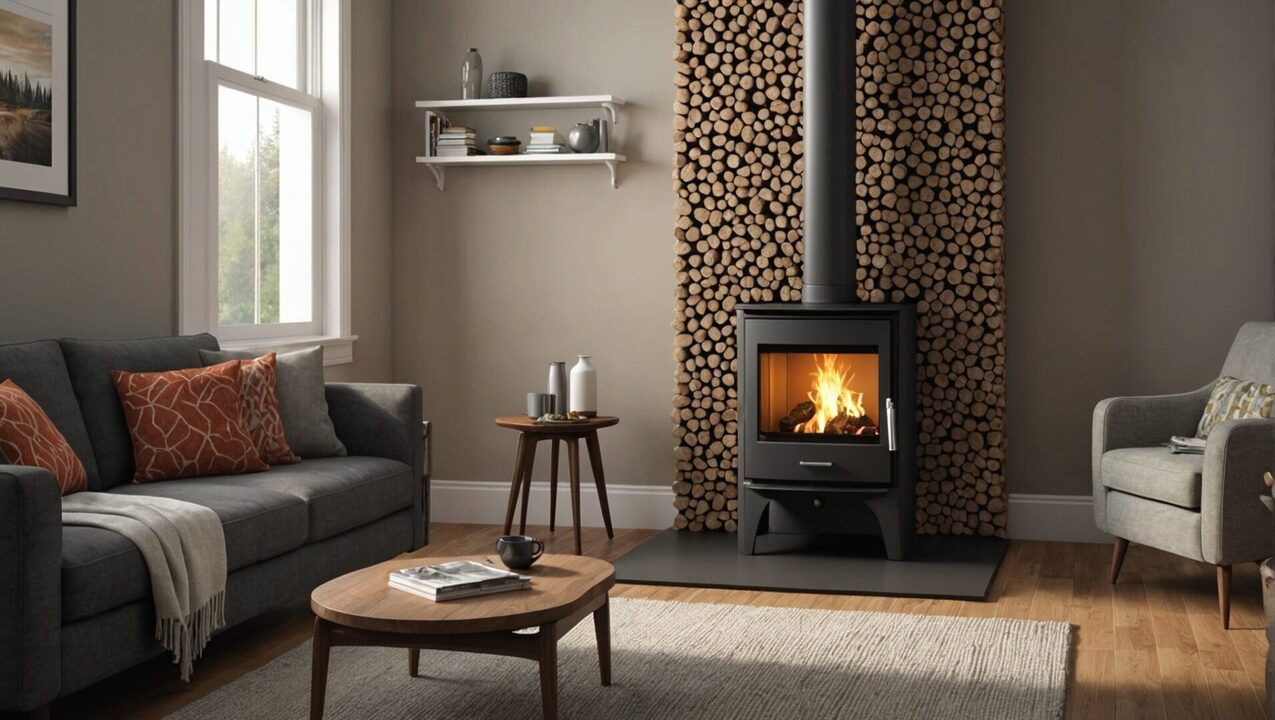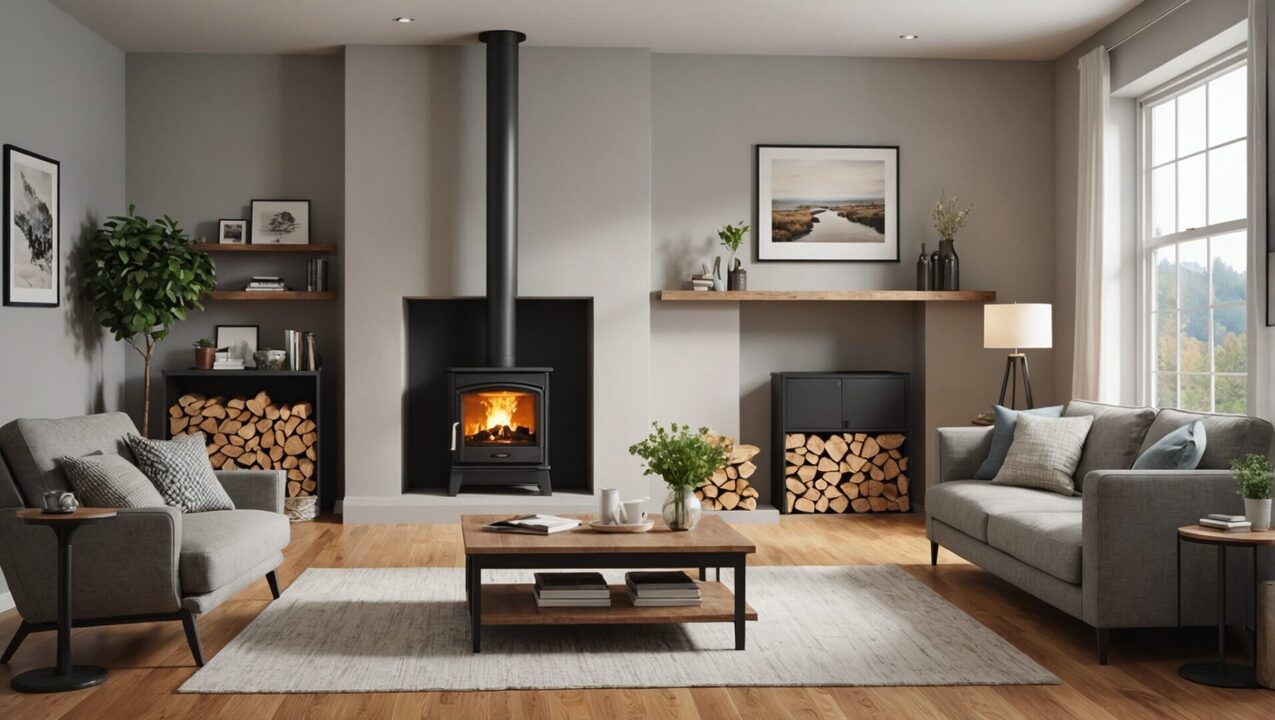Choose the power A pellet stove is essential to guarantee optimal heating of your space. The power required depends mainly on the surface to heat. In general, a stove has a minimum power of around 2.5 to 3 kW, while an optimal power is between 5 and 9 kW for adequate thermal comfort. For example, for a room 60 m², a 6 kW stove is often sufficient. For larger areas, such as 100 m², a power of 10 kW is recommended, especially in the case of well-insulated houses. It is also important to take into account the thermal balance of your home in order to select the power best suited to your heating needs.

Choosing the power of a pellet stove is a crucial decision to ensure the thermal comfort of your home. In fact, inadequate power can lead to nuisances such as excess energy consumption or insufficient heating. The following article looks at the different criteria to consider when making this choice, while offering clear and precise elements for reflection.
The basics of calculating the power of a pellet stove
Before choosing a pellet stove, it is essential to understand the fundamental criteria that influence the power needed for your space. This includes the surface area to be heated, the insulation of your home and your comfort expectations.
The surface to be heated
The living space constitutes the first element to analyze to determine the ideal power of a pellet stove. A simple calculation consists of estimating that approximately 100 watts per square meter. Therefore, for a house of 100 m², a stove 10kW would be recommended. For smaller areas, e.g. up to 60 m², a device of approximately 6kW will generally suffice.
Home insulation
The quality of the insulation also plays a major role in the choice of power. For a very well insulated house, the heating needs comparable to those of an old and poorly insulated house can vary considerably. It is therefore wise to have a heat assessment carried out in order to obtain a precise estimate. In the absence of the latter, we can estimate that a stove of 8kW may be sufficient for a home of 100 m² well insulated, like a construction compliant with regulations RT 2005.
Sur le même sujet :
Power assessment based on specific needs
The type of use envisaged for the pellet stove must also be taken into account. Do you need supplementary heating or a main solution? Needs vary depending on the job you are considering.
Supplementary heating
When a stove is intended for a supporting role, a lower power is acceptable. For example, a device with a power between 3 and 5 kW could be very suitable for casual evenings in a living room. The advantage here is that you can not only save on the purchase cost but also on the running costs.
Main heating
On the other hand, if the stove is your main source of heat, it is crucial not to underestimate the power required. This could cause insufficient heating and discomfort, especially in colder months. In this case, aim for a power between 7 and 10 kW could be more suitable for covering an area of approximately 100 m² at room temperature.
Sur le même sujet :
Pellet consumption and performance
Pellet consumption is another key data associated with the power of your device. It is estimated that a stove consumes, on average, 300g of pellets per hour for each kW of power. This means that a stove 10kW would consume approximately 3kg per hour at maximum operation.
Energy efficiency
It is a good idea to compare the energy efficiency of different models. A pellet stove with yield high will allow you to reduce your bills while benefiting from uniform heat. Energy labels, which range from A to G, are a great starting point for this analysis. The higher the rating, the more efficient the stove.
Brands and models to consider
The choice of model and brand is vast and may vary depending on technical specifications and functionalities. Some brands specialize in electrical appliances while others focus on optimal performance systems.
Best brands
We can cite recognized manufacturers such as Brisach And Leroy Merlin, specialized in quality pellet stoves. The choice of brand can also be influenced by after-sales service and availability of spare parts.
Specific models
Depending on your budget and your requirements, certain models such as the pellet stove hydro or traditional systems may be more suitable. Hydro technology allows efficient integration into a central heating system, while traditional models are generally simpler to install but less versatile.
Installation cost assessment
The cost of a pellet stove installation includes not only the purchase of the device, but also all associated costs. Costs can vary significantly depending on the complexity of the installation and the model chosen.
Cost estimate
It is recommended to have a detailed estimate drawn up to have a precise idea of the amounts to be incurred. In general, plan around 1500 to 3000 euros for purchase and installation is a reasonable basis. For more information on the cost of a wood stove, you can consult this article on the price of wood stoves.
Financial aid
Numerous financial aids exist for the installation of ecological heating systems, such as Tax credit and ANAH subsidies. It is worth exploring these options to reduce the total cost of the investment. A good example of a source of information on this aid can be found on the website of wood stove brands.
Consider the environmental impact
A final criterion to evaluate is the environmental impact of your choice of heating. Pellet stoves are often seen as a greener alternative to traditional heating systems because they can take advantage of wood, a renewable resource. However, production methods and transportation of pellets must also be taken into account.
A renewable alternative
Using wood pellets from sustainable sources helps reduce the carbon footprint associated with traditional heating methods. You can find information on the association between underfloor heating and wood stove on the mentioned site.
Emissions control
Also make sure you select a model that meets the strictest emission standards. Not only will you contribute to preserving the environment, but you will also benefit from better heating efficiency.
Evaluating the choice of the power of a pellet stove is not limited to a simple question of numbers. This involves understanding the needs, technical specifications and particular requirements of your home. Whether you are an owner or looking for alternative heating, the dialogue is open: share your experiences or ask your questions in comments. Each installation is unique, and your feedback could further enrich this essential debate on responsible heating.





